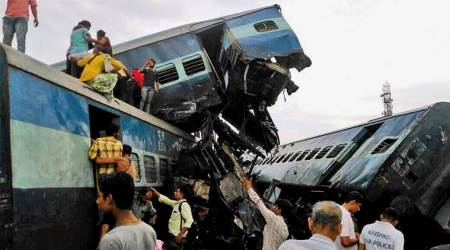 The RBI’s monetary policy statement has confirmed many of the conclusions.
The RBI’s monetary policy statement has confirmed many of the conclusions.
I am happy to read well-reasoned articles on India at 70 and particularly about the state of the economy. In my interactions with people, village folk and town folk, I find that there is growing interest in matters like prices, jobs and infrastructure. At political rallies, I find that people don’t pay much attention to political stump speeches or party-bashing or name-calling. They listen keenly to speeches about unfulfilled election promises; prices of farm produce, fuel and transport; jobs; the infrastructure deficit; education loans; and so on. Hence, I decided to stay this week with the subject of ‘Economy’.
There is ample officially blessed material on the state of the economy. There are the Economic Survey, Volume 2 (ES) and the RBI’s Monetary Policy Statement of August 2, 2017.
My dashboard last week had five metrics or measures on the health of the economy.
Jobless and Slow Growth
The first metric was JOBS. The ES has no separate section on jobs, only a two-page write-up on ‘Employment and Skill Development’. The ES has given no numbers on the jobs created, except a claim that among those who received skill training, 4,27,470 persons were given employment! Nothing is mentioned about states or sectors which have created the 4,27,470 jobs. Nothing has been said about the number of jobs likely to be created in 2017-2019. The silence on the most challenging issue tells the truth: India is witnessing moderate, but jobless, growth.
The second metric was GDP GROWTH. The ES admits that GDP growth declined from 8 per cent in 2015-16 to 7.1 per cent in 2016-17. It also admits that growth in the first half of 2016-17 was 7.7 per cent and 6.5 per cent in the second half. The decline, therefore, is from a rate of growth of 8 per cent to 6.5 per cent — exactly what I had predicted would be the impact of demonetisation. The Gross Value Addition (GVA) numbers are worse: in Q4 of 2016-17 it was 5.6 per cent. Going forward, the ES warns “sustaining current growth trajectory (read 6.5 per cent) will require action on more normal drivers of growth such as (private) investment and exports and cleaning up of balance sheets to facilitate credit growth”.
Declining Graphs
The third measure was INVESTMENT: In two startling graphs (Figures 47 and 48), the ES presents a depressing picture of Gross Fixed Capital Formation (GFCF). Growth in Public GFCF has been on the decline since Q2 of 2015-16. Growth in Private GFCF has also been on the decline since the same time and entered negative territory in Q4 of 2015-16 where it remained through 2016-17. The forecast is even more depressing: “The investment spending of the general government, relative to GDP, is likely to decline in 2017-18 as per available Budget information.”
The fourth metric was CREDIT GROWTH: I need say no more than quote from the ES: “The high growth observed in the 2003-08 period was accompanied by a surge in credit growth, which usually exceeded the 20 per cent mark year on year. After being impacted sharply by the global financial crisis and the fiscal stimuli over the period 2008-10, credit growth remained around the 15 per cent mark till February 2014. Subsequently, it has slowed down. During 2016-17, gross bank credit outstanding grew at around 7 per cent on an average. The latest reading for May 2017 is 4.1 per cent.” Non-food credit growth as a whole as well as credit growth to agriculture, industry, services and personal loans have been on the decline since September 2016. The worst affected is ‘industry’ where credit growth has been negative since September 2016. Public sector banks’ credit to industry has been negative since March 2016; it is only private banks that are giving some credit to industry.
The fifth measure was INDUSTRIAL PRODUCTION: According to the ES, “industrial performance has declined from 8.8 per cent during 2015-16 to 5.6 per cent in 2016-17.” The Index of Industrial Production (IIP) numbers are confusing. Going by the old series (base year 2004-05), the growth rate of IIP has improved from 0.7 per cent in Q1 to 1.9 per cent in Q4 of 2016-17. However, under the new series (base year 2011-12), the growth rate has declined in 2016-17 from 7.8 per cent in Q1 to 2.9 per cent in Q4! The new series numbers, although on a declining curve, are still better than the old series numbers! The new series numbers present a flattering picture which one may believe at one’s own risk!
Also read | Across the Aisle: India at 70 – The Economy
Given Up on 2019
The RBI’s monetary policy statement has confirmed many of the conclusions. According to the RBI, business sentiment reflects expectations of moderation of activity in Q2 of 2017-18 (read slower growth). Industrial performance has weakened and there is output contraction in consumer durables and capital goods (read declining industrial production). The number of new investment announcements fell to a 12-year low in Q1 of 2016-17 and high levels of stress in twin balance sheets — banks and corporations — are likely to deter new investment, and states may cut back on capital expenditure (read sluggish investment). The statement was silent on jobs and credit growth.
As I had feared, we are celebrating the 70th anniversary of Independence without joy. I am afraid the government fears looking at the dashboard. It seems to have given up on achhe din by 2019 and is busy polishing the rhetoric of a New India in 2022!

